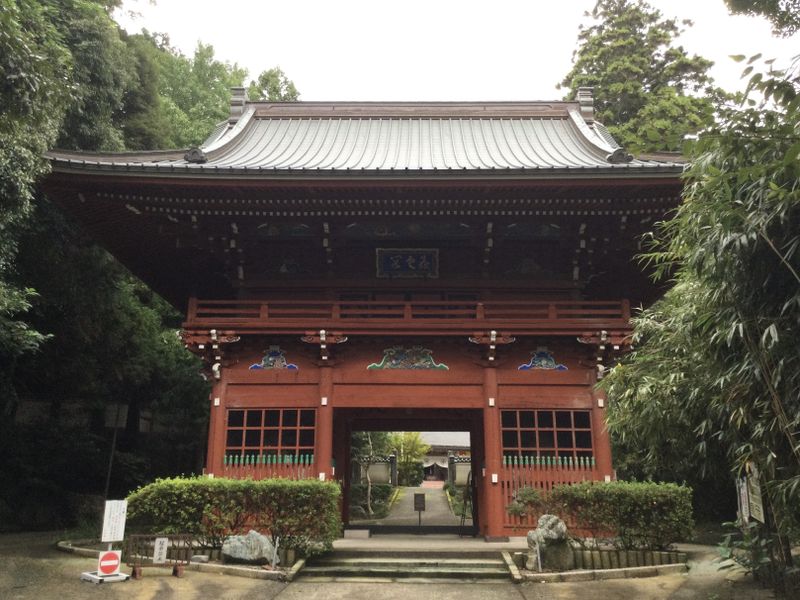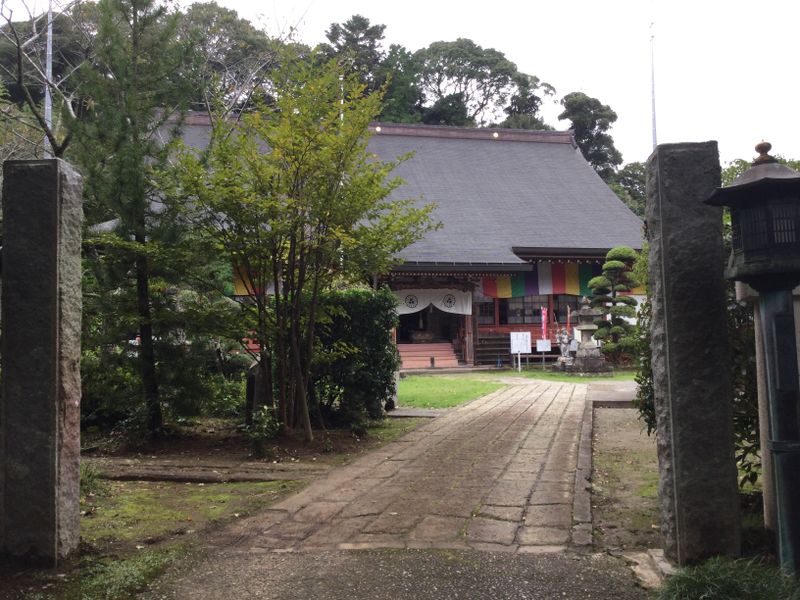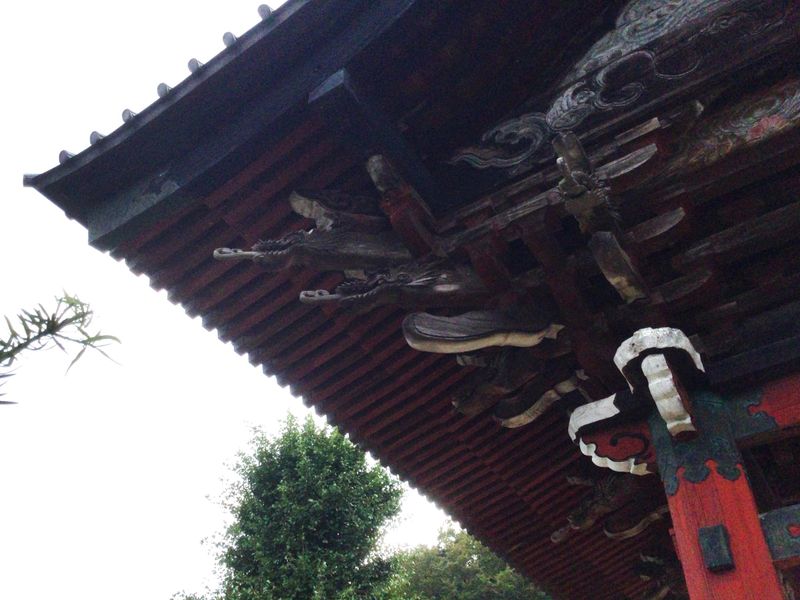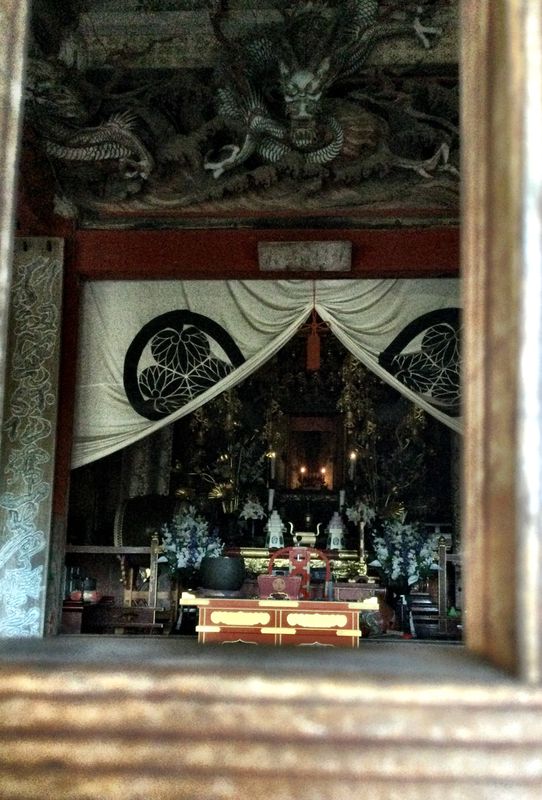Oct 22, 2024
Isumi City's Masterworks Part 2
In the first blog post, I told you about an adventure in Chiba Prefecture’s Isumi City where a handful of foreign residents, volunteer cultural ambassadors, were treated to a tour of Izunaji, a temple decorated with the works of Nami no Ihachi, a master carver who’s left his impressions on dozens of temples.
The origin of a masterwork?
Winding country roads through agricultural lands rimmed by forested hills brought us to 行元寺 Gyoganji which overloaded our senses. This 1200-year-old temple’s hondo, the main temple, is decorated with brightly painted transoms and pillars designed by Takamatsu Matahachi, another Edo-era artist. While those are alluring, it was the neighboring reception rooms that our guide, Kataoka Sensei, wanted us to see.

Kataoka-sensei’s thesis is that Hokusai’s Great Wave, the iconic image of towering waves, boats, and Mt. Fuji in the background, was inspired by the transom in the reception room at Gyoganji. The work, Nami ni Hoju no Zu, Jewels in the waves, bears a strong resemblance to Hokusai’s Great Wave image. It’s startling in its dynamism - catching waves in high relief just before they’re about to break, bearing flaming jewels.

To respect the priest’s wishes, I refrained from taking photos of the treasures. You can read more about Kataoka sensei’s research and see comparisons of the images of Hokusai’s and Nami no Ihachi’s works in Nippon.com’s coverage, Nami no Ihachi: Did a Rural Wood Carver Inspire Hokusai’s “Great Wave”?
Dynamic dragon glimpse
And we weren’t done yet. With our senses filled with the images at Gyoganji, we were whisked away to a third temple, Shonenji. This temple in Chosei District, a little ways from Isumi City, is home to another stunning array of dragon images. To make it more alluring, it’s not indicated on Google Maps. This temple, originally founded in 1307 as a Jishu sect temple was converted to Jodo Shinshu sect in the 1500s.

Much later, the temple received treatment from the Nami no Ihachi woodworking dynasty. Dragons with curled tongues, arabesques surrounding peonies, and a startling dragon carving decorate the temple today.

When we visited, the priest was out on errands, so we couldn’t go in. But we could glimpse through the wooden grille a dragon in high relief with broad scales in high relief.

Our guide told us that the image had terrified generations of children in the district. It’s considered one of the most elaborate and intricate dragon carvings in Japan.
You might think these treasures are out of the way, but Nami no Ihachi and his descendants have left their works all over the Kanto region. When you visit Taishakuten in Katsushika Ward, you can see the carvings of the Nami no Ihachi descendants.
Do you know other spots to see the five generations of carvers from Nami no Ihachi in the Kanto region? Let me know!



1 Comment
BigfamJapan
on Oct 23
What a treat to go on a tour like that and get so much detailed information first hand. I love experiences like that.